Ballantrae Windows
Paratene Matchitt
Type
- Window(s)
Medium
- Glass
Dimensions
- 27 panels: H4000mm x W16,730mm (wrapped around stairwell)

Paratene Matchitt, ‘Ballantrae Windows’ (1987) (detail), University of Waikato, Kirikiriroa Hamilton
Image: Bronwyn Holloway-Smith, Public Art Heritage Aotearoa NZ, 2024
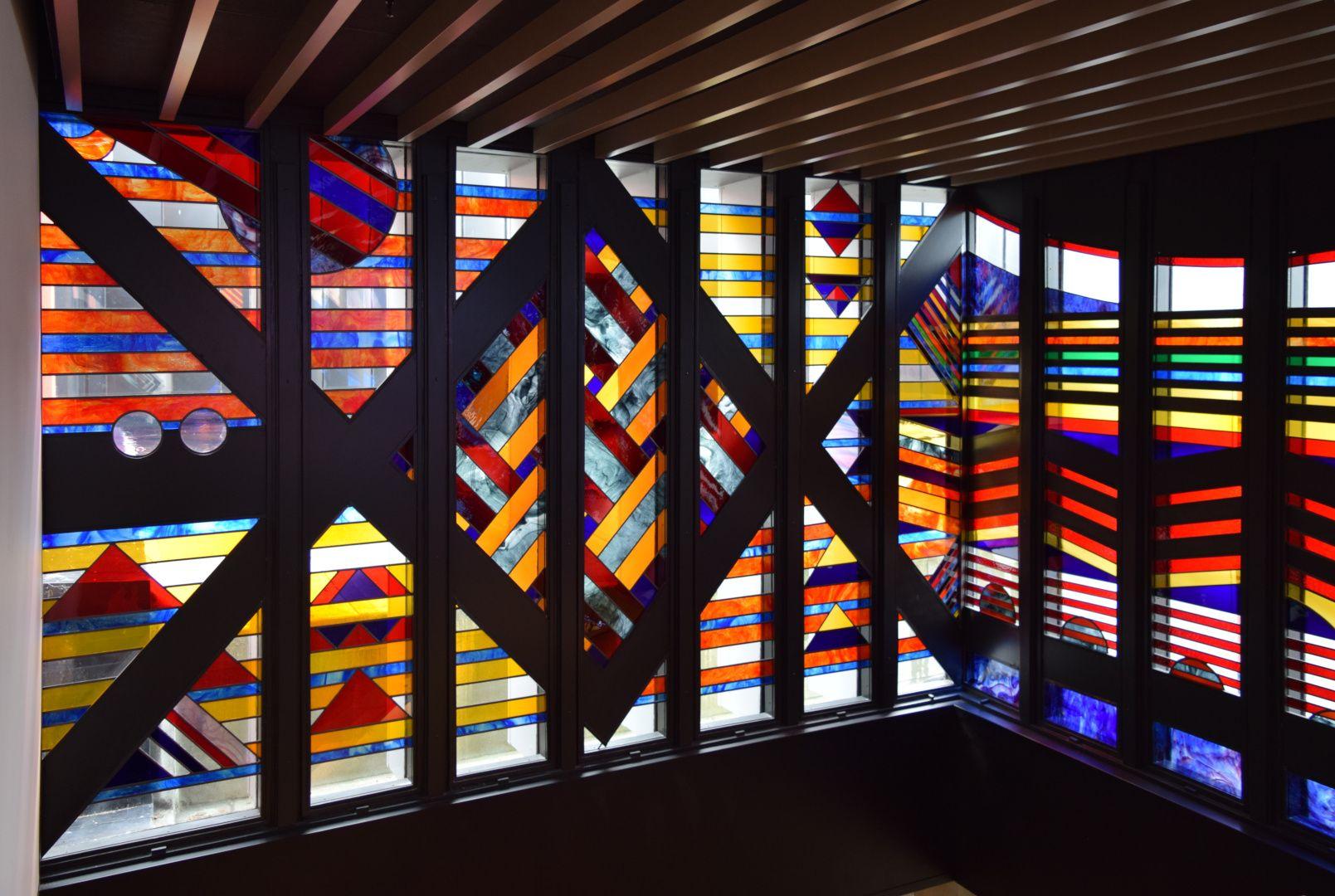
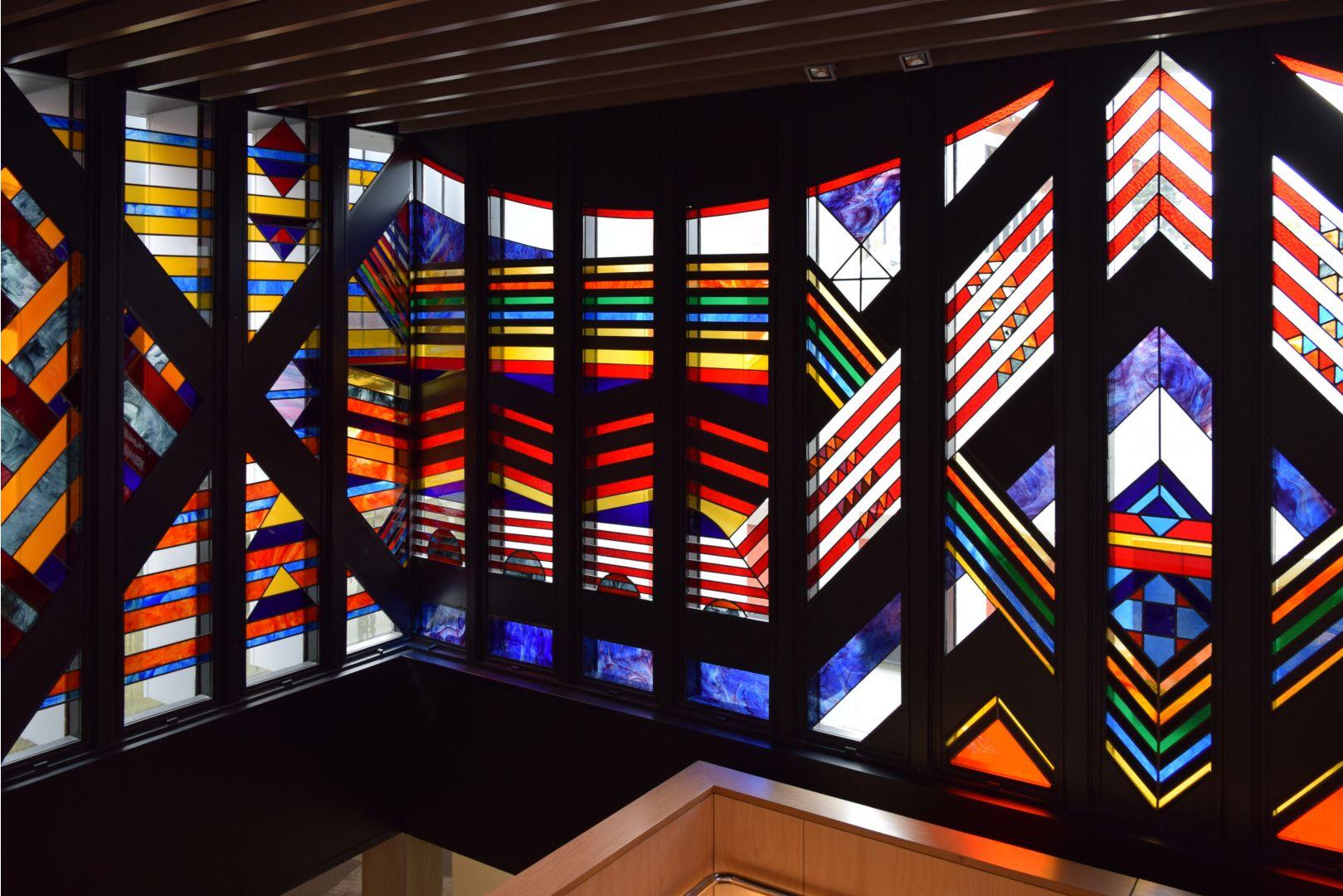
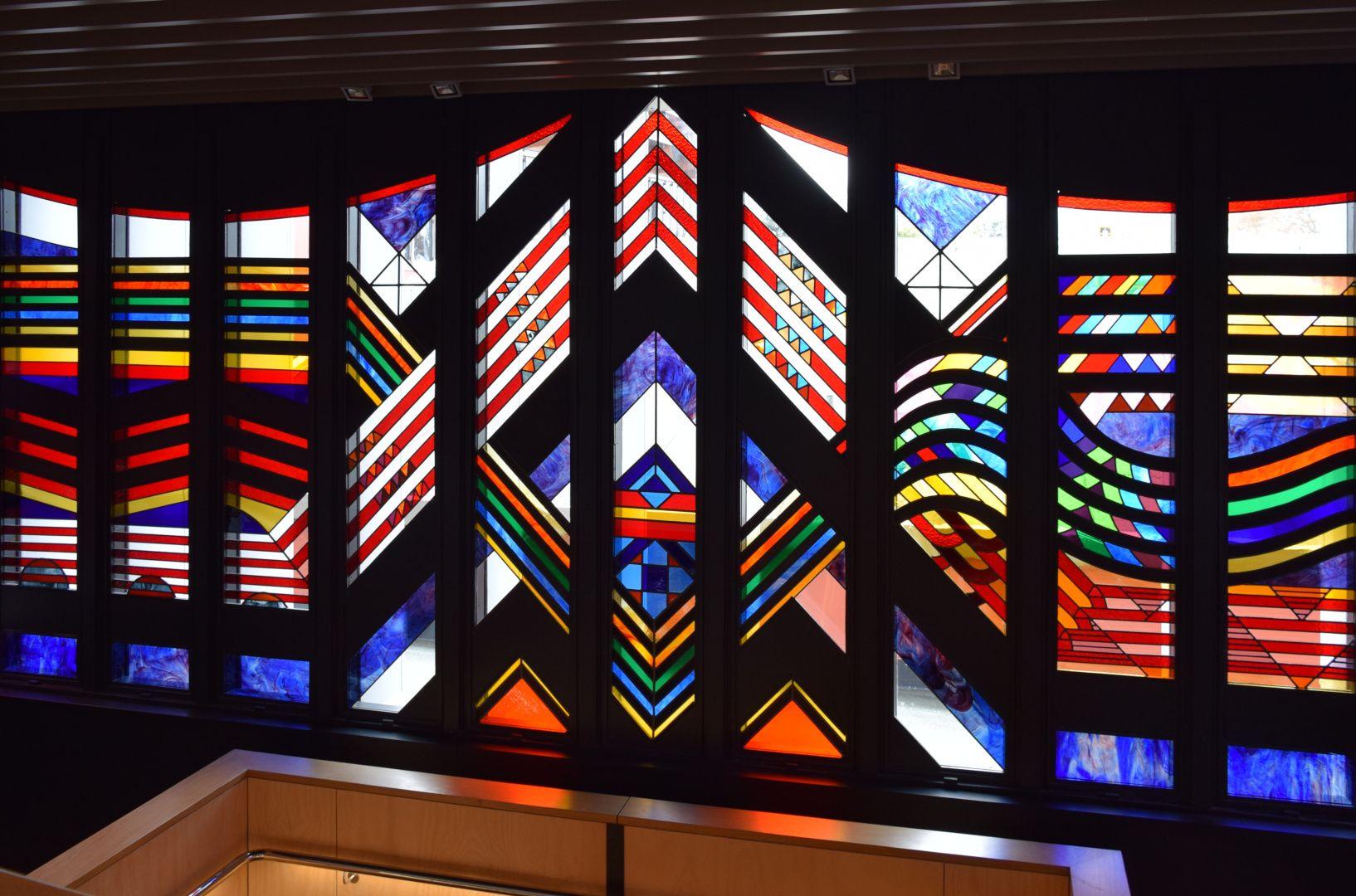
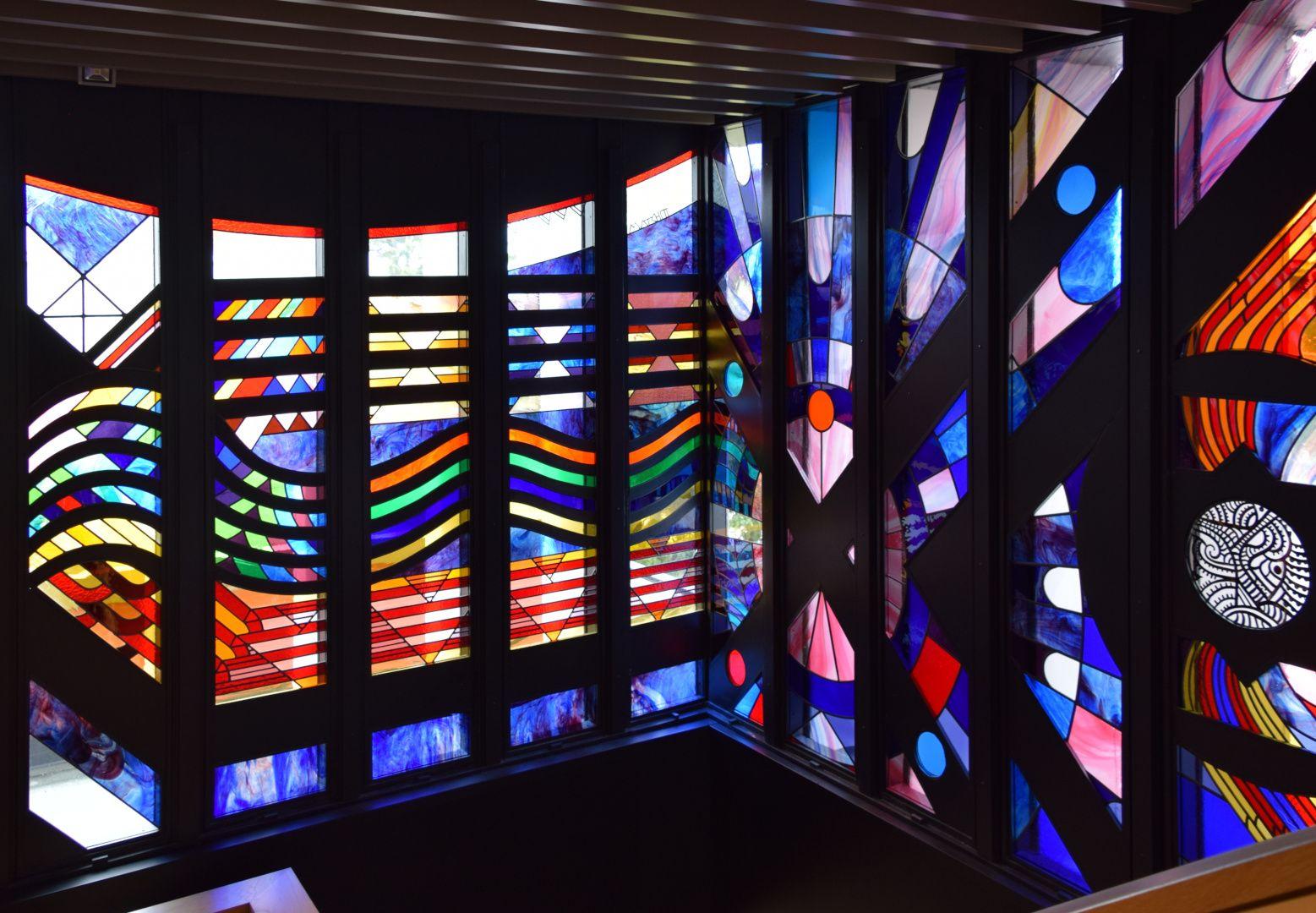
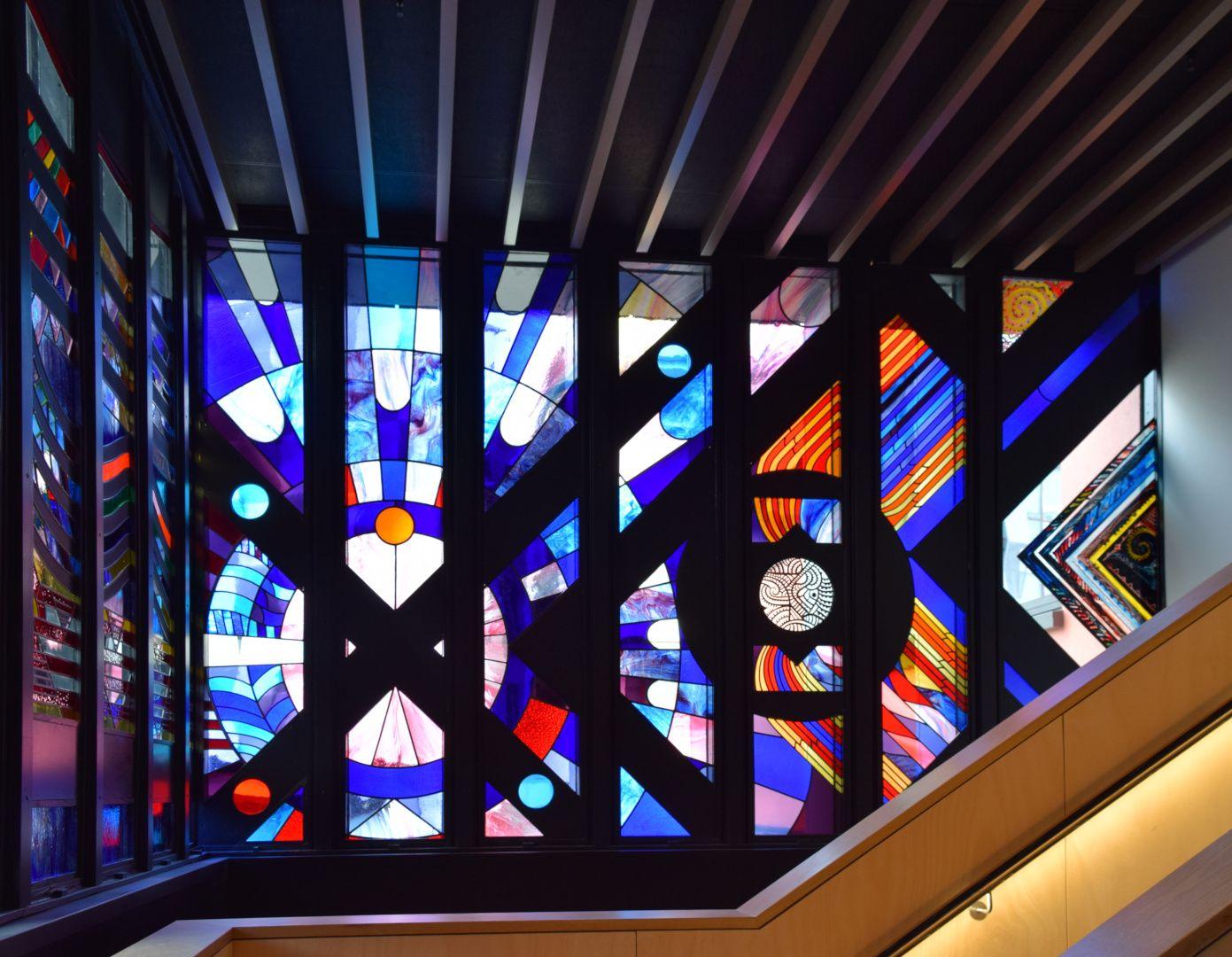
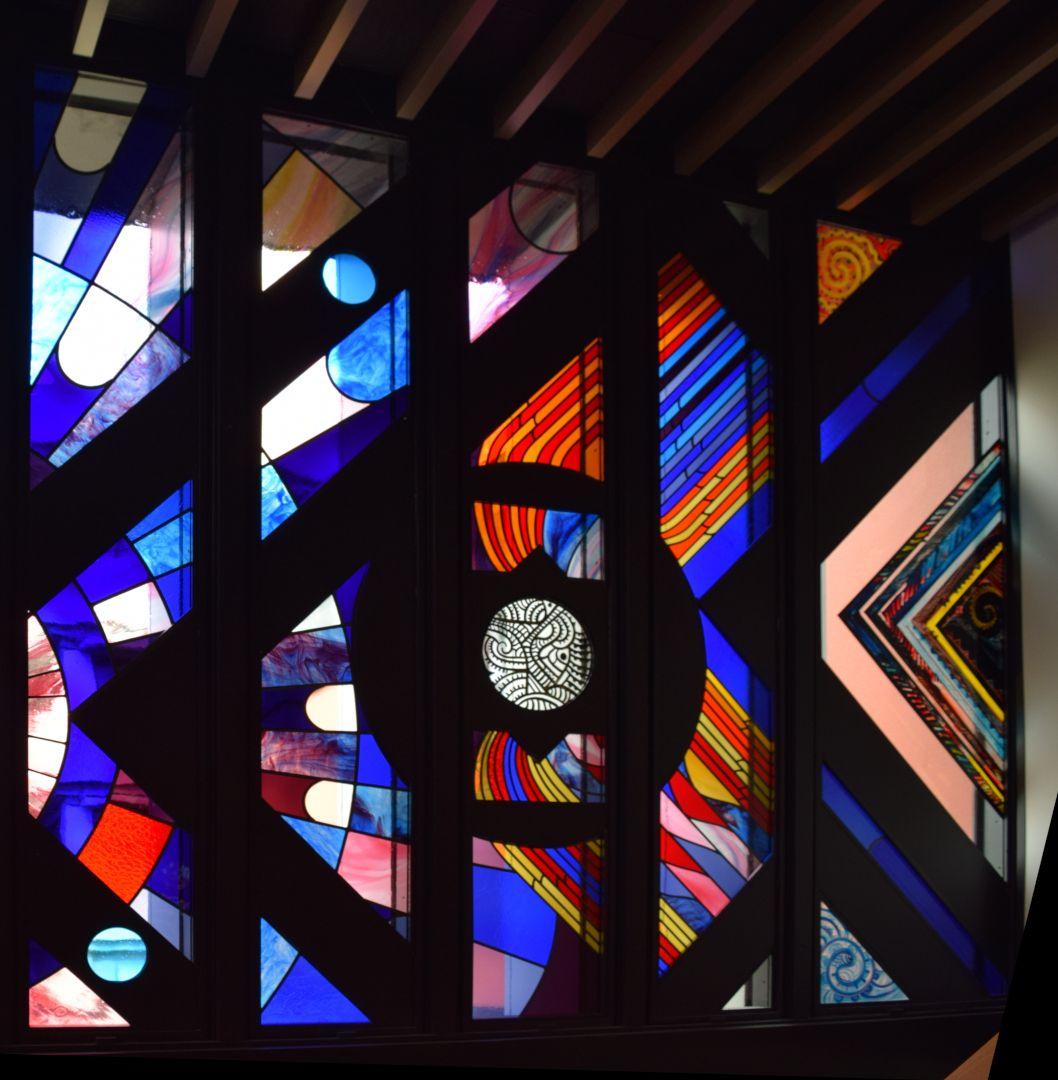
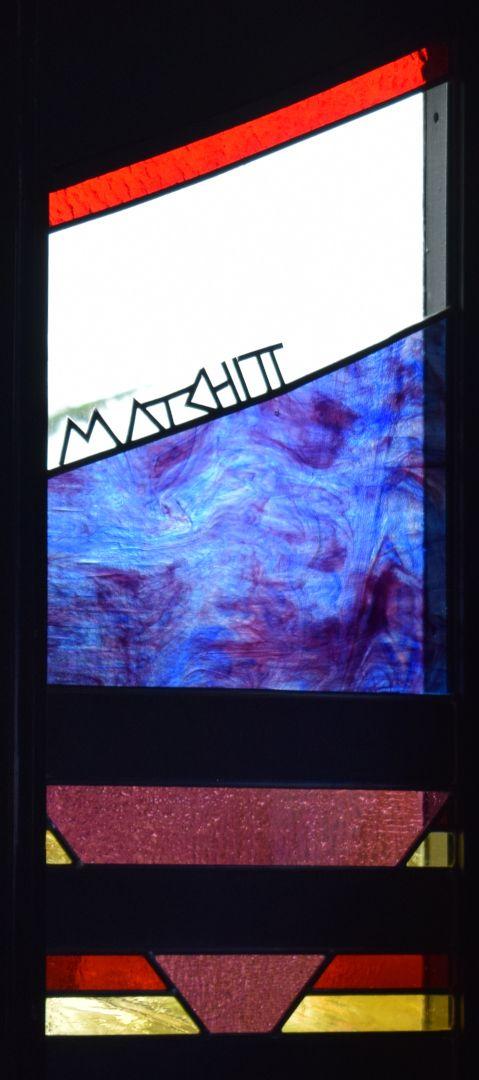
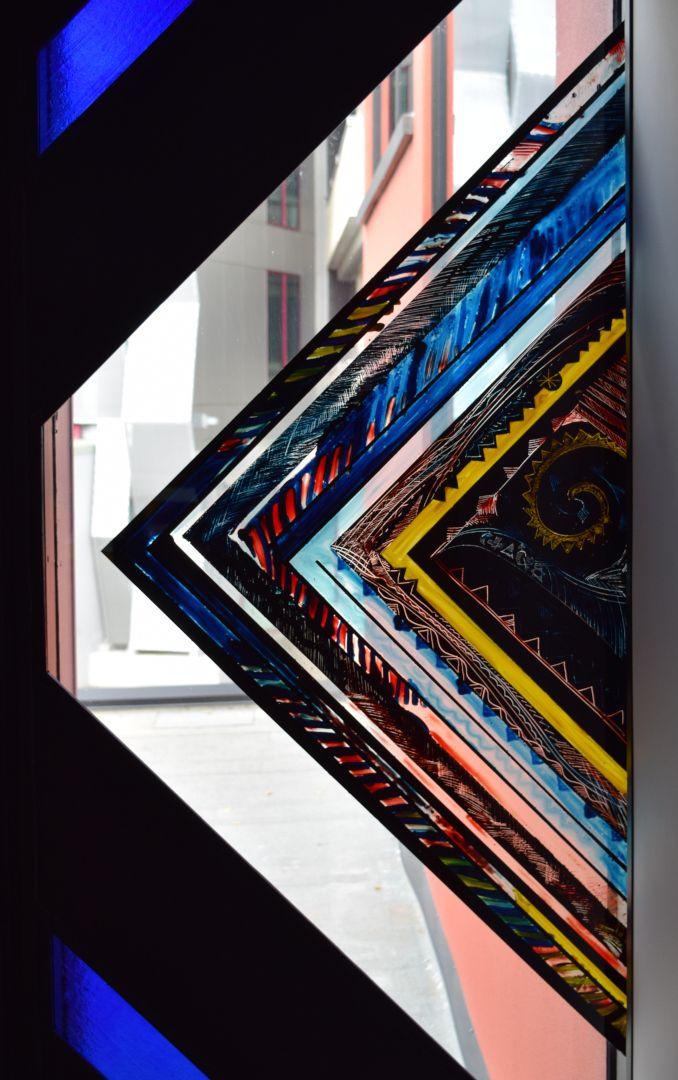
- DETAILS
- MAP
Description
This strikingly vibrant painted and stained glass artwork stretches across three sides of a stairwell. The 27 panels are divided into three sections: The first section represents knowledge, depicted as 'Kete o te Wananga', the baskets of knowledge; the second section shows the nature of the ancient Waikato, the river forming a central motif with the whakatauki 'He piko, he taniwha' - on every bend of the river there is a power; and the third section represents elements of the cosmos, with the Southern Cross fixing the design in space and Halley's Comet fixing it in time.
“The design flows from left to right, from North, through East to South, which in the Maori world is up, futurity, the unknown. It moves from the primordial night [te Pō], through moonset to the blaze of sun at midday. Then on to star and sky motifs that work themselves out in representations of common humanity trying, scrabbling, and scratching to approximate and give expression of the celestial glory, the working-out of some great natural plan. Under it all is the natural velvety, purple-blue warmth of the essential night. Flowing through the whole design are the mystical and spiritual waters of the Waikato, sustaining, purifying, supporting and moving. Repeated, over and over, are the triangular motifs of mana, the ariki each on their hill top each discrete, combining individuality with collective tribal strength, the sharp back-ridges of the guardian taniwha or of any New Zealand landscape.” - Jim Ritchie, Art New Zealand, pp.68-69
In Tainui, triangular motifs are a particular symbol for the guardian taniwha who protect the iwi’s matauranga. They also express the paramount standing of each hapu within Tainui.
The work is a memorial to Lord Ballantrae, who opened the University’s original building (as then-Governor General Sir Bernard Fergusson) in 1965, calling upon it to give modern expression to the life forces of Māori culture.
He became the university’s first Honorary Doctor in 1967. Ballantrae was greatly respected by the Māori people, a status epitomised by the establishment of the University’s Bernard Fergusson Memorial Scholarship in 1982 by the Māori Queen, Dame Te Atairangikaahu, from a fund raised on her behalf in memory of Lord Ballantrae. The University also holds a valuable collection of Māori taonga, on permanent loan from the family.
References to Ballantrae embedded in the work include his monocle, the southern cross, and Halley’s comet. The windows were unveiled by then-Governor-General, Sir Paul Reeves, in March 1987.
See also:
- Jim Ritchie, ‘Looking at light’, NZ Listener, September 19, 1987, pp.50-51
- Jim Ritchie, ‘Windows on a Maori World’, Art New Zealand, Issue 45: Summer 1987-88, cover and pp.67-69
- James Ritchie, ‘Para Matchitt: Stained Glass Windows’ (pamphlet) (University of Waikato: 1987)
- Ivor Snowdon, ‘The University’s Works of Art’, in ‘The University of Waikato: Twenty-five Years’ (University of Waikato: c.1989)
